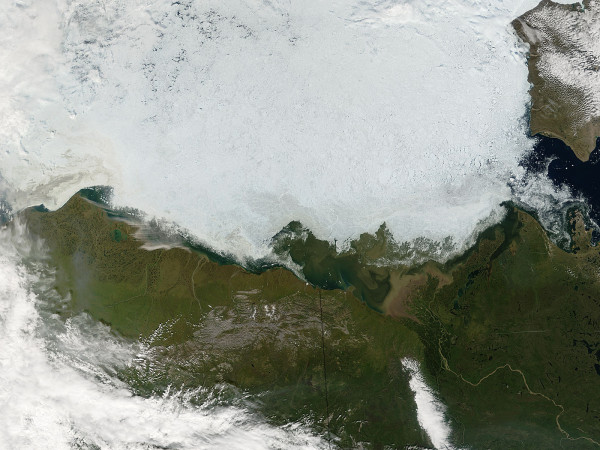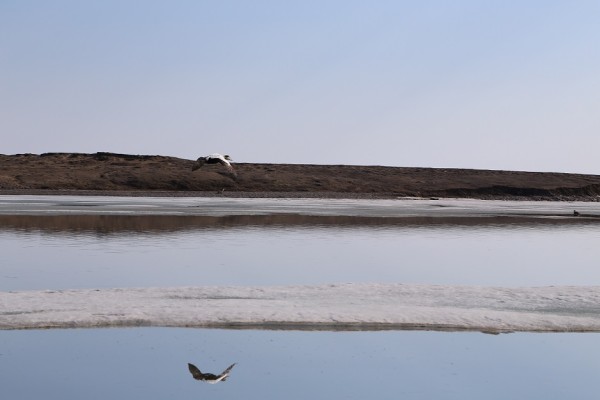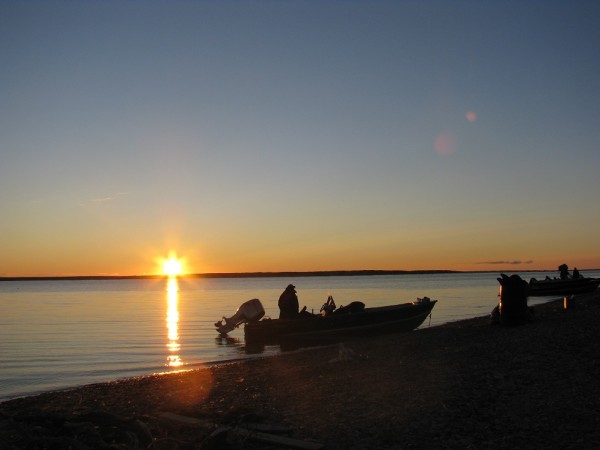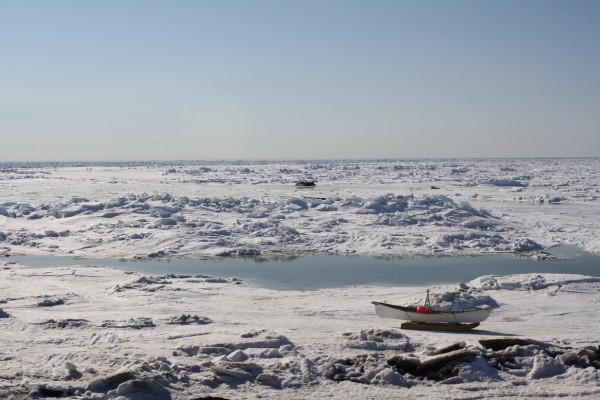One Arctic, One Future, One Spill?
The Inuvialuit of the Western Canadian Arctic, and Inupiat of Northern Alaska share a strong cultural bond that largely revolves around their intimate dependence on and stewardship of the animals of the Beaufort Sea. Much as they share this ecosystem, they share the risks should an oil spill happen within the Beaufort waters. Today, WWF-Canada released an extensive scientific study and interactive website that models a range of oil spill scenarios in the Beaufort Sea, allowing Northerners and the wider public to visualize what an oil spill in the Beaufort Sea could look like.

This week, in Inuvik, NWT, Inuit from across the circumpolar regions attended the Inuit Circumpolar Council (ICC) General Assembly. The theme of the conference was “Ukiuqtaqtumi Hivuniptingun- One Arctic, One Future”. I was lucky enough to sit in on a few sessions, and it was inspiring to see Inuit speak with a strong voice about self-determination and resilience of their culture, economies, and well-being! Two key themes that were raised were respect and responsibility:
- Respect deserved for the resilient Inuit communities, who have lived in the Arctic for millennia and been stewards of their land, waters, and ice; and
- Responsibility to ensure that development is sustainable and that that the risks to communities and the environment are well understood and limited.

Arctic communities are in need of economic development, but it was made clear that they don’t want this at all costs – they want development that is sustainable, reflects their values, and where they can manage the pace. As outlined in A Circumpolar Inuit Declaration on Resource Development Principles in Inuit Nunaat 2011: Healthy communities and households require both a healthy environment and a healthy economy!
However, with the real potential for increased shipping and oil and gas exploration in the Beaufort Sea, there is an ever-present risk of an oil spill. One Inuvialuit elder commented at the Berger Inquiry in the 1980s:
“An oil spill out there in that moving ice where they can’t control it, that’s the end of the seals. I think that not only will this part of the world suffer if the ocean is finished, I think every [Eskimo, from Alaska] all the way to the Eastern Arctic is going to suffer because that oil … is going to finish the fish. And those fish don’t just stay here, they go all over. Same with the seals, same with the polar bears, they go all over the place, and if they come here and get soaked with oil… they’re finished.”
By completing this scientific work, we hope to inform Northerners and other decision-makers about the risks of oil spills – both large and small – and better understand how far the oil will spread, and how would it interact with the communities, environment, and species of the Beaufort Sea.
I hope you’ll explore these results yourself by visiting arcticspills.wwfcastg.wwf.ca.

Over the last few months, I have received guidance from Inuvialuit environmental management agencies in designing this study. We have already begun presenting the results of this research to the local resource co-management agencies, and over the next month will continue travelling to the communities along the coast to personally deliver this important information to communities. They are – and must be – critical decision makers about the activities that happen on their lands and waters. I welcome you to follow me on this blog as I share pictures, stories and insights from the communities we visit as we work together to ensure a sustainable, resilient, and beautiful Arctic future.

